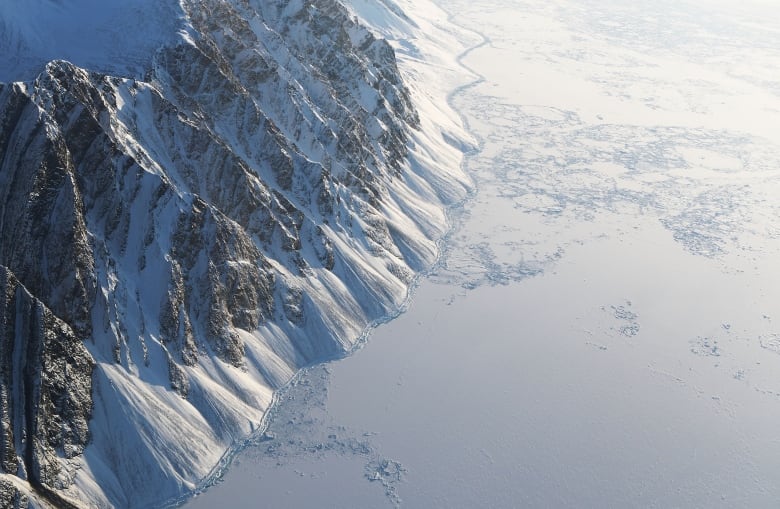52 million years ago Canada’s Arctic was home to pre-primates, paleontologists say | CBC Radio
On Ellesmere Island in Canada’s Arctic, winter temperatures often drop below –40 C. 52 million years ago it was a hot and swampy forest where, according to a new study, primitive relatives of primates thrived.
“Imagine a cross between a lemur and a squirrel that was about half the size of your domestic house cat,” said Chris Beard, professor of paleontology at the University of Kansas.
Researchers studying tooth and bone fragments collected since the 1970s from five different locations across the Arctic island concluded the fossils belong to a group of mammals called Ignacius, known previously from a species found in the Rocky Mountains from Wyoming to Alberta.
Beard said it’s amazing to find these two new sister species — Ignacius mckennai and I. dawsonae — on Ellesmere Island. He says it’s a step forward in our understanding of these primitive primate relatives.
His team’s work was published in the journal PLOS One.
When these animals were alive 52 million years ago in the Eocene epoch, the world was a much warmer place. A diverse array of primate species lived around the world, including many places they’re absent from today, including northern China, the plains of Saskatchewan in North America and even on the British Isles and European mainland.
“The Eocene was maybe not ‘planet of the apes,’ but it was definitely planet of the primates,” Beard told Quirks & Quarks host, Bob McDonald.
This now extinct Ignacius branch on the primate family tree likely diverged from the main trunk leading toward all living primates, just before lemurs diverged from the branch that leads to monkeys, apes and humans.
“So they’ve got many features that living primates have. They don’t have all of them,” described Beard.
Like extinct and modern day non-human primates, the Ignacius lived only in tropical or subtropical regions. They were distinct from modern primates in that they had claws instead of nails and eyes on the side of their heads instead of in front.

A warm, yet harsh environment
With the planet being much warmer then than it is today, it was possible for these animals to colonize areas as far North as Ellesmere Island. But while they wouldn’t have had to deal with extreme cold, they still would have had to contend with six months of darkness.
“The tropical fruits that Ignacius would normally eat during the summer daylight are unavailable during this long winter,” said Beard.
He said there are two ways mammals can survive in such a harsh, lean environment. One is to hibernate, which no known primate-like species has ever been known to do. The other option would be to rely on what he called “fall back foods.”
“These are foods that are definitely not your first choice. It’s not your favourite item on the menu, but it’s something that you will eat in order to survive,” Beard explained. He says these foods likely would have included nuts and seeds.

Adapting to six months of darkness
This hypothesi was supported by features the researchers discovered on the fossil jaw bones and teeth.
Beard said the main muscles that control chewing had moved forward in these animals compared to fossils of related species that were living at the same time in the Rocky Mountains.
“The biomechanical effect is that it increases the bite forces that can be generated between your upper and lower teeth,” said Beard.
The surface shape of their teeth also evolved to become more robust, which together with the adaptations the researchers saw in their jaws indicate they developed the ability to eat really hard foods, like nuts and seeds.
“The nuts and seeds could be stored in a little cache of food that could get them through that long winter, and so that was their fall back food and probably the trick that Ignacius utilized in order to survive in the Arctic.”

These adaptations could be a sign of what may be in store for other animals now that the Arctic is warming up due to the burning of fossil fuels, according to Beard.
“We will have colonization of the Arctic by new kinds of organisms [as the climate heats up]. Some of those organisms, given enough time, are going to develop their own unique adaptations in the same way that Ignacius changed its teeth in its jaws.”
Produced and written by Sonya Buyting
For all the latest Technology News Click Here
For the latest news and updates, follow us on Google News.

